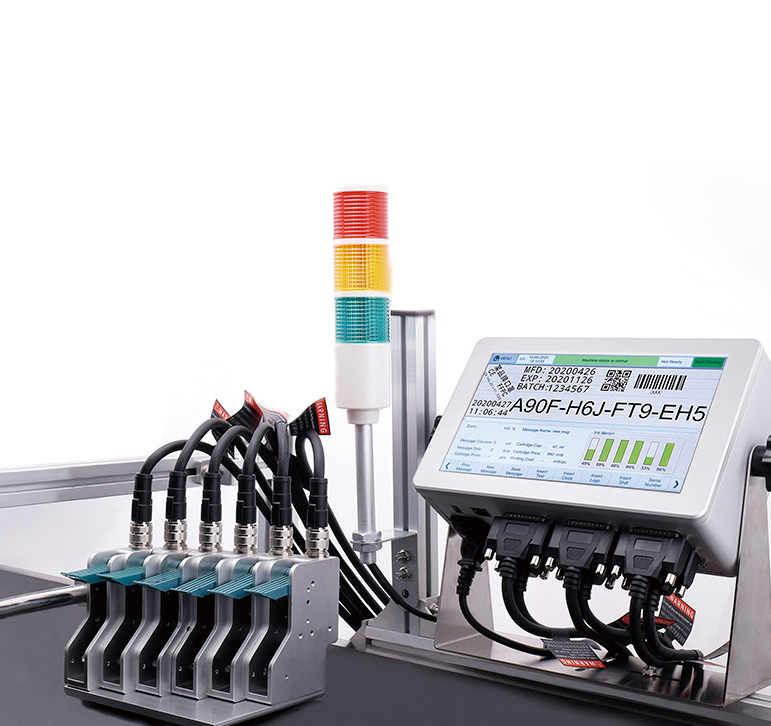In the dynamic world of modern printing, where quality, efficiency, and precision are paramount, selecting the right thermal inkjet printer for your specific printing requirements is a decision that can significantly impact your business operations. Thermal inkjet printing technology has evolved considerably, offering a range of features and capabilities that cater to various industries and applications. To ensure you make an informed decision and choose a printer that aligns seamlessly with your needs, several key factors warrant careful consideration.

Print Resolution and Quality
Print resolution directly influences the clarity, sharpness, and overall quality of the printed output. When evaluating thermal inkjet printers, assess their print resolution specifications, usually measured in dots per inch (DPI). For applications demanding intricate graphics, barcodes, or fine text, a higher DPI will yield superior results. Ensure the printer's resolution meets your specific requirements to guarantee legibility and visual appeal.
Substrate Compatibility
Different printing substrates, such as paper, cardboard, plastics, metals, fabrics, and more, may necessitate varying ink formulations and drying mechanisms. Before making a decision, ascertain that the thermal inkjet printer is compatible with the materials you intend to print on. Additionally, consider the substrate's surface characteristics, as certain printers may be optimized for smooth surfaces, while others excel on textured or uneven materials.
Ink Formulation and Color Options
The type of ink used by a thermal inkjet printer greatly impacts the final output's durability, resistance to environmental factors, and adherence to the substrate. Depending on your application, you may require specialized inks, such as UV-curable, solvent-based, or water-based inks. Evaluate the ink formulation options offered by the printer and ensure they align with your printing requirements. Additionally, consider whether the printer supports monochrome or full-color printing, depending on your visual and branding needs.
Printing Speed and Throughput
In today's fast-paced business landscape, production speed plays a pivotal role in meeting demand and deadlines. Assess the thermal inkjet printer's printing speed, typically measured in pages per minute (PPM) or linear feet per minute (LFM). For high-volume applications, opt for a printer with faster throughput capabilities to maintain efficient production lines without compromising on print quality.
Integration with Workflow and Connectivity
Seamless integration into your existing workflow and connectivity with other systems is crucial for optimized operations. Choose a thermal inkjet printer that offers compatibility with your production environment, including network connectivity, software integration, and compatibility with automation systems. This ensures streamlined data transfer, reduces manual intervention, and enhances overall productivity.
Maintenance and Reliability
Long-term performance and minimal downtime are essential considerations for any printing equipment. Look for thermal inkjet printers with user-friendly maintenance features, such as easy printhead cleaning and ink cartridge replacement. Additionally, seek printers known for their reliability and durability, as this will contribute to consistent output and fewer disruptions to your operations.
Scalability and Future Expansion
As your business grows and evolves, your printing needs may change as well. When selecting a thermal inkjet printer, think ahead and consider its scalability. A printer that offers modular upgrades, expandable features, and the potential for future enhancements ensures that your investment remains viable and adaptable to your evolving requirements.
Support and Service
Responsive customer support and accessible service options are invaluable assets, especially when dealing with complex printing technology. Research the manufacturer's reputation for customer service, availability of technical assistance, and accessibility to replacement parts and consumables. A reliable support network ensures that any issues or questions that arise during your printer's lifecycle are promptly addressed.
Cost of Ownership
While the initial purchase price is a significant factor, evaluating the total cost of ownership provides a more accurate picture of the investment's value. Consider factors such as ink costs, maintenance expenses, energy consumption, and potential downtime due to repairs or maintenance. Calculating the overall cost over the printer's lifespan helps you make an informed decision that aligns with your budget and long-term goals.
Selecting a thermal inkjet printer for specific printing requirements is a strategic decision that demands careful evaluation of various factors. By considering aspects such as print resolution, substrate compatibility, ink formulation, printing speed, integration, maintenance, scalability, support, and cost of ownership, you can confidently choose a printer that not only meets your immediate needs but also positions your business for success in the evolving world of printing technology.
评论
发表评论